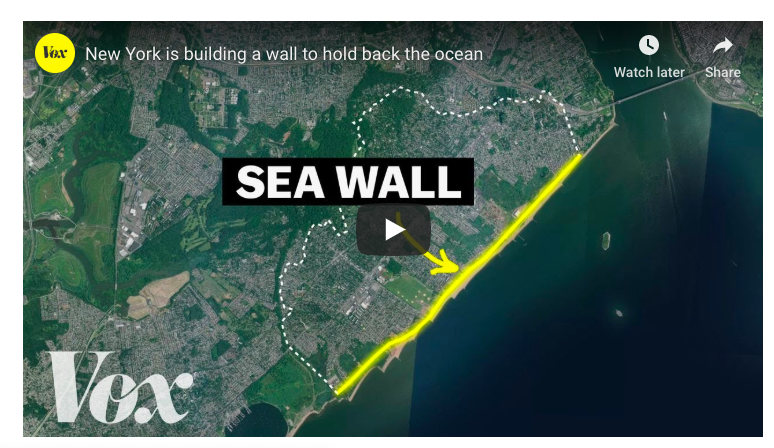Curbed NY: Seven years after Superstorm Sandy, New York City has rebuilt housing, reopened beaches, and prioritized crucial repairs to its subway. But out on Staten Island, which bore the brunt of the storm’s devastation, most of the destroyed homes still sit empty. Now a massive new piece of infrastructure is planned here, as part of a new way cities like New York are addressing climate change.
In April 2019, New York City received the funding to build a five-mile sea wall on Staten Island, a hulking structure rising 20 feet above current sea level, but designed to blend into the shoreline by doubling as a promenade. The barrier is expected to save New York City $30 million a year in flood-related damages and could potentially save lives—more than half of the 43 people killed in Sandy lived on Staten Island.
Vicious storms like Sandy are becoming more frequent in a warming climate. Storm surges and coastal flooding are particularly worrisome for the U.S., as more people have flocked to major cities and are living closer than ever to rising sea levels.
Staten Island’s sea wall is part of a new way of taking on climate change called resiliency, where city leaders work closely with scientists to identify looming risks and take proactive steps to adapt the urban environment for this future. These interventions can often be designed as dual-purpose infrastructure, creating amenities like urban plazas, walking trails, and sports fields that improve everyday life. Many of these ideas for New York emerged from Rebuild by Design, a program developed post-Sandy to reimagine infrastructure’s potential.
A wall on its own isn’t enough to stop increasingly intense storms, but it can be part of a larger toolkit of interventions to protect homes and humans. Additional lines of defense might include artificial barrier islands, networks of levees, and stormwater detention systems to help mitigate flooding.
But any climate adaptation strategy must also include a discussion about managed retreat—moving people away from high-risk areas, just like what’s happened on Staten Island. Read more >>
